Utah County Birders
Newsletter
July 2018
Contents
Monthly Meeting
Upcoming Field Trips
Captain's Log
Bird of the Month
Field Trip Reports
Printable Version
July MEETING:
Thursday, July 12, 2018,
For our July meeting we are going to meet at Bridal Veil Falls and spend the
evening looking for Black Swifts.
Meet at the Bridal Veil Falls Overlook (the parking area just off the highway,
not down along the river).
7PM until dark.
FIELD TRIPS:
Saturday, July 21st, 8 am --
Nebo Bench Trailhead
We will meet at Payson Canyon Kiwanis Park, S Payson
Canyon Rd, Payson, UT 84651
Map: https://goo.gl/maps/c6AN4tiMMUx
We are actively recruiting people to lead local half-day field
trips, any time, any place. If you would like to lead a field trip or if you
have any ideas for this year’s field trips, please contact Suzi Holt at -
suzerqholt@gmail.com
Utah County Birders
Captain’s Log: July 2018
by Keeli Marvel
Greeting
intrepid birders! The temperature is climbing and we are entering the dog
days of summer. Hopefully you all are staying cool. Sam and I got our Pony
Express BBS route done a couple of weeks ago, and Fish Springs NWR was warm
and buggy but hopping with birds. We had a few noteworthy sightings while
conducting the survey. The first was a White-winged Dove perched in a
tree over the bunkhouse at the refuge. It was a first record for the count
and a rare sighting for Tooele Co. to boot! Not to mention, it’s always so
satisfying when there’s no doubt about the ID of a rarity and you can back
it up with easy photographic evidence.
Our second noteworthy sighting was a species we generally get on the count,
Snowy Plover! The cool thing is we saw hatchling plovers, which I
know I’ve raved about before, but seriously deserve another rant. They’re so
cute! They’re basically little cotton balls with toothpicks for legs. They
nest at Fish Springs so, while it was no surprise to get them on the count,
it is always a pleasure.Our third and
last noteworthy sighting we also generally get on the count but we got to
witness behavior I’d only heard about before and never seen for myself.
Every year we usually hear American Bittern while conducting the bird
survey. This year we heard one during the count, but we had the added bonus
of seeing one on the drive back. It was standing in the middle of a low
green grassy area and I think it thought it was camouflaged because as we
watched it, it gently wobbled its’ neck back and forth like it was grass
blowing in the wind. It was the coolest behavior to witness and a great way
to end another BBS count.
In other news, we have a few nest boxes at work that were put up for
American Kestrels to nest in, and nest in them they have! We monitor
them as part of a Hawk Watch kestrel conservation initiative, and this week
the nestlings were old enough to band. Kestrels are hardy little birds and
are pretty adapted to human disturbance and two of our boxes that were
occupied this year were within a few hundred feet of our office building at
work. Once the kestrels reach a certain age, we are able to take them out of
the nest boxes briefly to record some simple measurements and put a USGS
numbered band on them. This band enables us to identify them if they return
in the future, and in fact, one of the birds we banded last year returned as
an adult this year to nest! The only downside is once they hit a certain age
their little talons get pretty sharp and they can latch on to you pretty
good. After banding 3 boxes in the last week, Sam and I both have scratches
and puncture wounds on our fingers to show for it.
Well, that’s all I have for now. Happy 4th of July and happy birding!
Keeli Marvel |
|
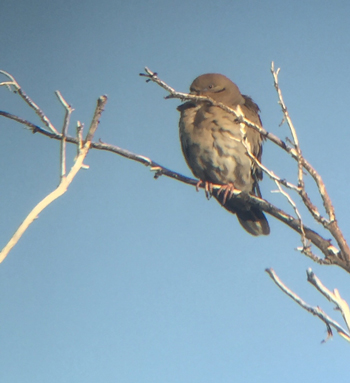 |
|
|
White-winged Dove
|
|
|
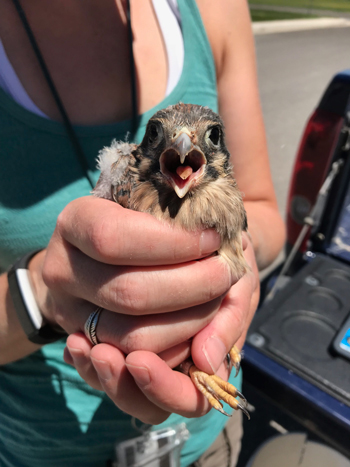 |
| |
|
American Kestrel
|
BIRD OF THE MONTH:
|
Sandhill Crane
(Antigone canadensis)
by Milt Moody
When I started birding some 20 years ago or so, we
had to go to Heber Valley to see the Sandhill Cranes. Heber was in the
southern most part of the breeding range for this species. Most Sandhill Cranes go to the isolated wet meadow of Canada to fine an appropriate
nesting ground. Now they are also nesting here in Utah Valley and they’re
becoming quite numerous. |
A couple of weeks ago I took my nephew Derick
and his wife Aubree, out towards Lincoln Beach to see some birds. In the
large fields south of the beach we saw three pairs of Sandhill Cranes. Two
of them had young chicks with them. We got out the scope and watch the
nearest family as the youngster was jumping up and down and flapping its
featherless wings as it tried to keep up with its parents. A week earlier
perhaps the same parents were shielding the young one with their
wings as a Northern Harrier patrolled the area. Harriers and other
birds of prey along with foxes, racoons, wolves, cougars, etc. are on the
look out for vulnerable young birds like this. It's a very dangerous
world for young birds.
The young chicks, known as colts, kind of stand out with their orangish-rust, fluffy feathers. They look somewhat awkward but are as cute as can
be, which can be said for most young birds. Of course they have to grow quickly and learn how to fly and do the
other crane-types of things so they will be ready to migrate south for the
winter, where they usually congregate in large groups of cranes in low
damp wetlands and roost at night in shallow standing water. The colts will
stay with their parents 'till the next spring, eating roots, tubers,
seeds, grains as well as other things found in the wet meadow environment
which is ideal for young birds like this. |
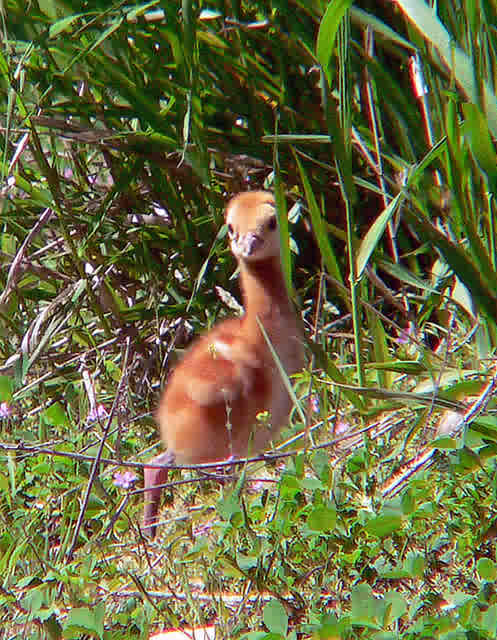
by Jim Bailey |
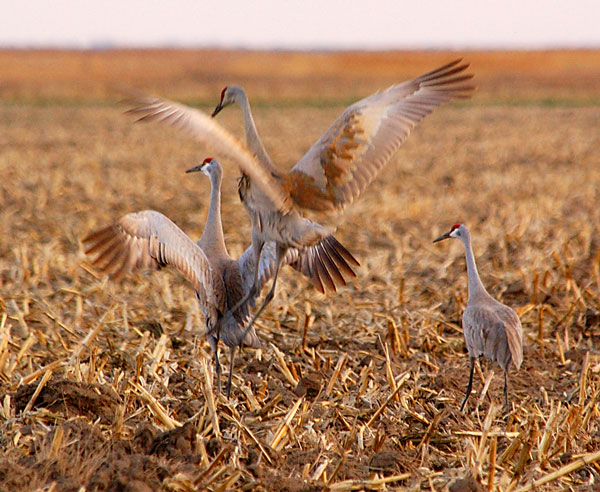
Dancing Cranes
by Lu Guddings |
|
Sandhill Cranes are mature enough to mate in
their second year. They mate for life and strengthen their bonds
with dance, which takes place morning and evening on the roosting grounds
and most usually during
spring time although they can also dance other times of the year as well.
During migration they gather in large groups on their way to the breeding grounds where
unattached cranes can find a mate. One such place is along the
Platte River in Nebraska where an estimated half million Sandhill Cranes
meet during migration every spring as a part of a long-established crane community
event. After this "spring fling" they
continue north, on to their breeding grounds where each pair builds a low,
broad mound (4-6" high and 30-40" across) out of marsh plants,
grasses and weeds which will serve as their nest. They lay up to 3 eggs, but
usually only one chick survives to fledge.
After nesting and raising their
families, Sandhill Cranes and their fully grown colts start their
migration southward, some, perhaps to the same place our first set of chicks,
now one year old, are maturing and preparing to head north the next
spring, maybe to the same field where they grew up-- and the cycle
begins again. |
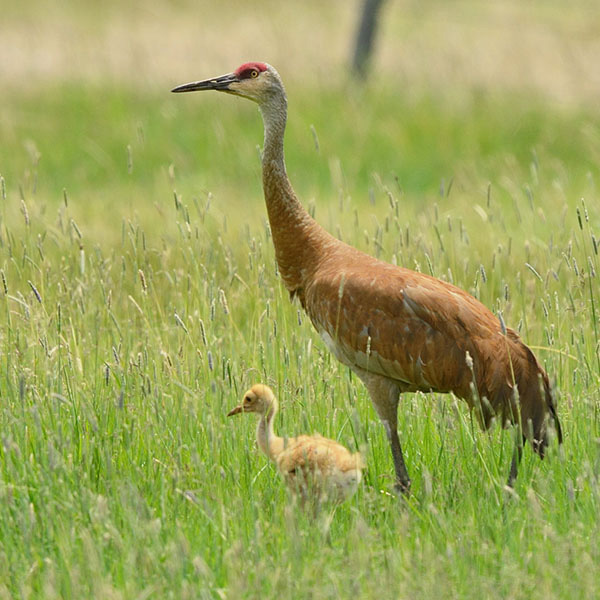
by John Crowley |
Sources:
The Audubon society Encyclopedia of North American Birds by John K. Terres
All About Birds, website: The Cornell Lab of Ornithology
Wikipedia website
Smithsonian.com |
Click here for past 'Birds of the Month'.
|
Field Trip Reports
|
|
|
|
The UCB Meeting this month was a night-time Field
Trip -
14 June 2018
Nebo Scenic
Loop Owling Trip
by Suzi Holt
|
|
On
Thursday June 14th we met at 9 pm. Our trip was great! We had a group of 25!
To start off a few of us saw a Common Poorwill at Beer Can Flats. We
tried to call it in, but we could only hear it a ways off. We tried again
for them below Maple Dell with no luck, although those in my car got a great
looks at one wanting to play chicken in the road on the way up. At Blackhawk
it was really windy, Keeli, Amanda and Sam heard a flammie up there, and
some of us heard a Northern Saw-whet. It sounded like they were on
the other side of the campground so we headed over there only to wilder
hurricane winds.
We gave up on top and drove down below Payson Lakes and Machelle heard one
more flammie. A mile lower we heard another Northern Saw-whet calling. We
got it to come right in, everyone heard it well with even some barking! But
only a few saw it. Down below the road damage we stopped and heard two more
Flamulated Owls. We finished back at At Beer Can Flats where we
called the Western Screech Owls and heard probably 5. We had one come
in and everyone got great looks! Overall we hit all four targets!!! Not a
lot of photos :-( and they were crappy at that :-) We finished a little
after Midnight..
|
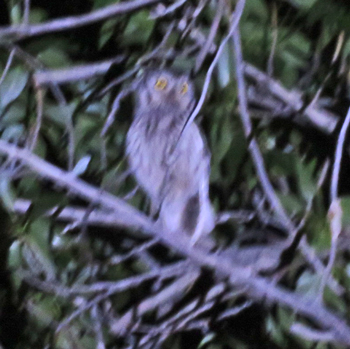 |
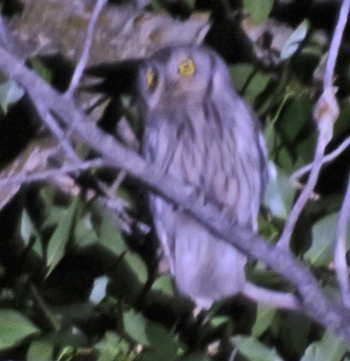 |
|
Western Screech-Owl |
Western Screech-Owl |
|
|
Washington County -
1-2 June 2018
by Suzi Holt
UC Birders take on Washingon County for two days! 95
SPECIES!!!
|
|
June 1-2, 2018 13 UC Birders met at 6am:
Day 1. We headed out to Lytle Ranch. On
the way we saw Gambel's Quail, CACTUS WREN, White-Throated Swifts, Great
Blue Heron, Ravens, and Loggerhead Shrikes. |
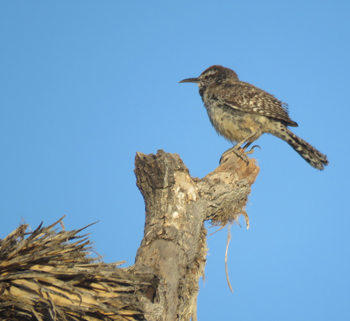 |
| |
Cactus Wren |
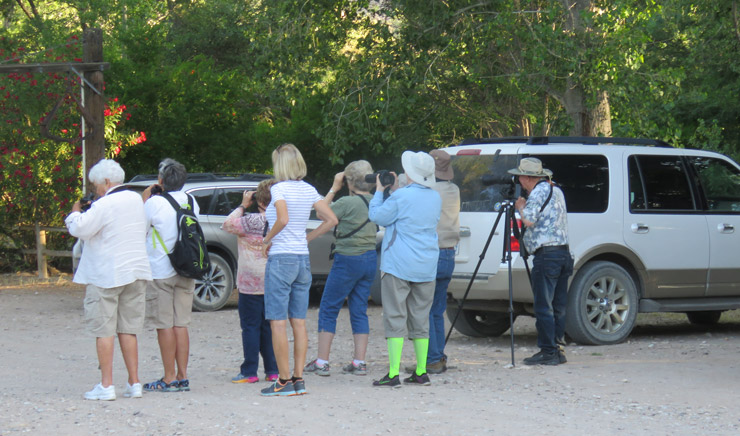 |
| At the ranch we
promptly saw one of our Target birds the SUMMER TANAGER! We walked out
towards the Pecan Orchard and up a little draw to see the BLACK-TAILED
GNATCATCHER, Verdin, Black-chinned Hummingbird, and a LADDER-BACKED
WOODPECKER!! |
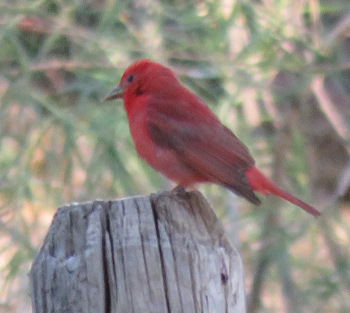 |
|
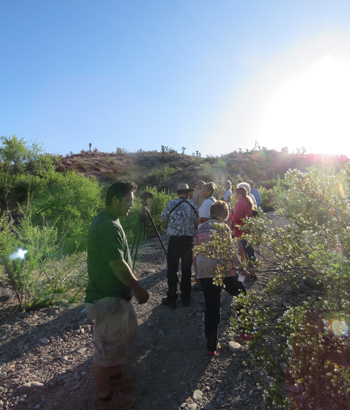
|
Summer Tanager |
|
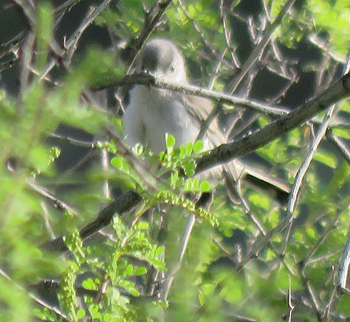 |
|
|
Black-tailed Gnatcatcher |
| From there we made
our way towards the pond. We saw Bell's Vireo, Bewick's Wren and tons of
Mourning Doves. We also saw Desert Willows, Creosote bushes and some ghourd
that I can't remember the name of. |
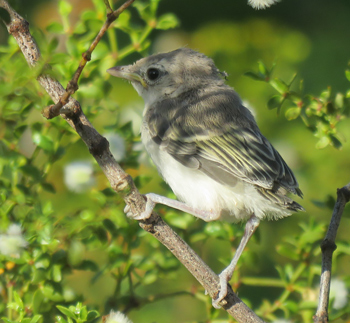 |
|
|
Bell's Vireo (with no
tail)? |
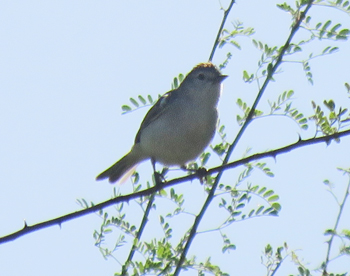 |
We walked around the back side of the pond and
found the Lucy's Warbler, had a White-winged dove flyover and heard a
Ash-throated Flycatcher. On our way back we saw a BLUE GROSBEAK,
Black-headed Grosbeak, PHAINOPEPOLA, Western Tanagers, House Finch and
Bullock's Orioles eating in the top of the Mulberry tree til a Cooper's Hawk
flew over. |
|
Lucy's Warbler |
|
|
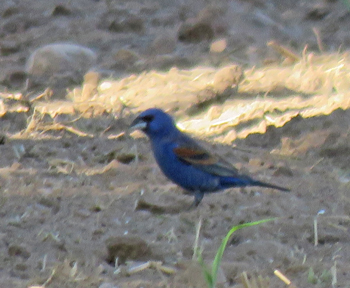 |
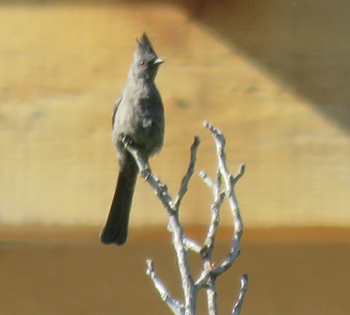 |
|
Blue Grosbeak |
Phainopepla |
I then took them for a sneak peak and the "Lizard Death Trap" and then we
walked the wash. We saw another Summer Tanager, heard a Black-throated
Sparrow, saw a Yellow Warbler, Ash-throated Flycatcher and Gambel's Quail.
We wanted to see the Brown-crested Flycatcher so we drove up the road to the
wash and by the river found a BROWN-CRESTED FLYCATCHER!!! |
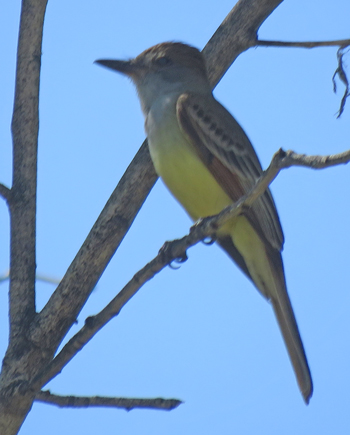 |
|
|
Brown-crested Flycatcher |
| Amanda and
Natalie got down and close with the tadpoles and baby frogs in the river. We
had just started back on the road and Izzy spots a bird on a Joshua Tree, we
stopped and as soon as I got the binos on it I screamed, "its a SCOTT"S
ORIOLE!!!!" A lifer for many of us and a beauty at that! From there we had
one more surprise.... and saw lots more Loggerhead Shrikes, Black-throated
Sparrows, Turkey Vultures and Ash-throated Flycatchers . We stopped at Utah Hill and
heard the Black-chinned Sparrow and some got a quick look at it. Drove up
the Gunlock Wash and some got a sneak peak at a COMMON BLACKHAWK!!! We saw
Cliff Swallows and a Meadowlark and American Coots. |
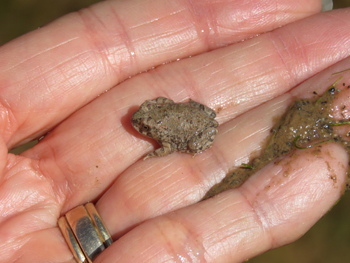
"baby frog in the river"
|
|
Scott's Oriole
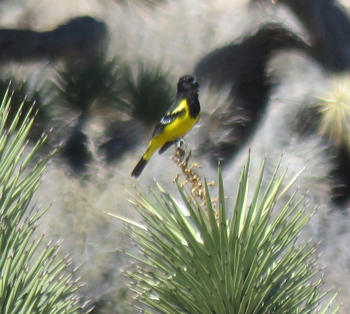 |
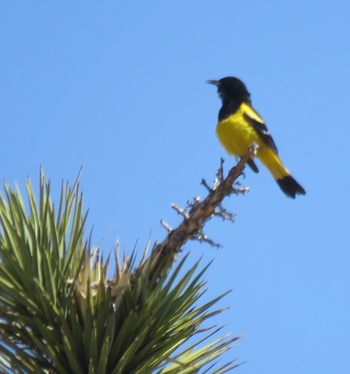 |
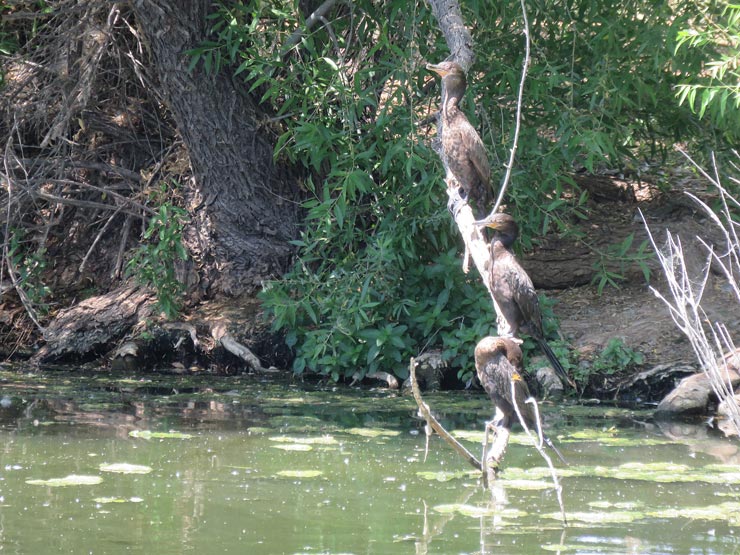 |
|
Neotropic Cormorants |
|
We stopped
at Tonaquint and saw ABERT'S TOWHEE, Song Sparrow, Black Phoebe, Neotropic
Cormorants, Say's Phoebe, and lots of pond ducks. At Brook's Nature Park we
saw HOODED and Bullock's Orioles. Sharon misted us with water and we made
plans for Saturday. Our final stop was Boots/Cox Park for the VERMILLION
FLYCATCHER!. We were exhausted and had put 9870 steps on the fitbit so we
decided to call it quits.
|
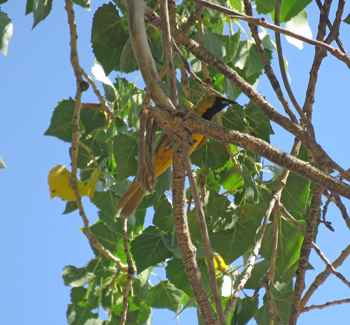 |
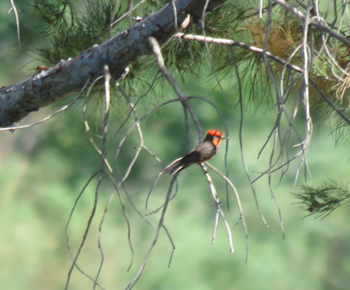 |
|
Hooded Oriole |
Vermilion Flycatcher |
|
Day 2- We met a 7am so we got a hour more shut eye. We headed for
Kolob Terrace. It is a beautiful ride and the scenery is spectacular, but we
went straight to the top to Lava Point Lookout to see the CALIFORNIA
CONDORS. |
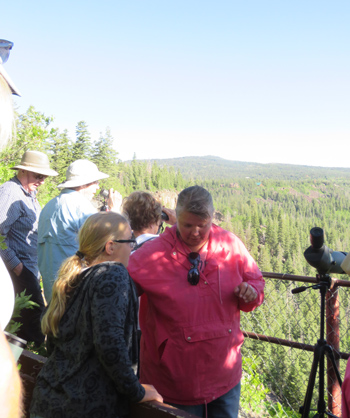 |
| We got there at 8
am and looked out to the North in the Ponderosa snags exactly where Maurice
showed me on Thursday and there were 5!!! We saw White-throated Swifts,
Violet-green Swallows, Turkey Vultures and a Peregrine Falcon flyby at eye
level. We patiently waited for the Condors to take off at 9:30 like they did
on Thursday but they were a little later than that. We all got great looks
at 2 of them catching the thermals, the others continued to stretch and warm
up, so we decided to hit the trail. |
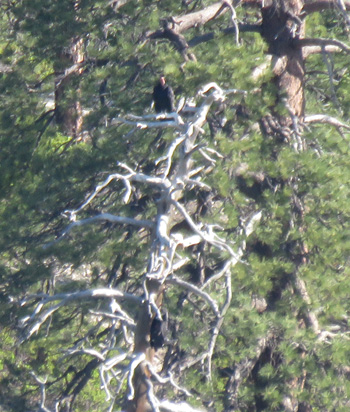 |
|
|
California Condor |
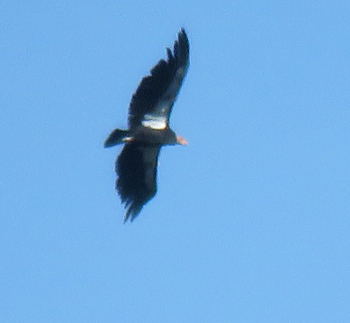 |
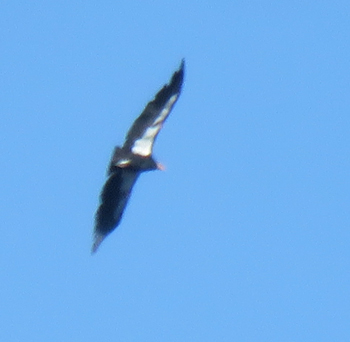 |
|
|
|
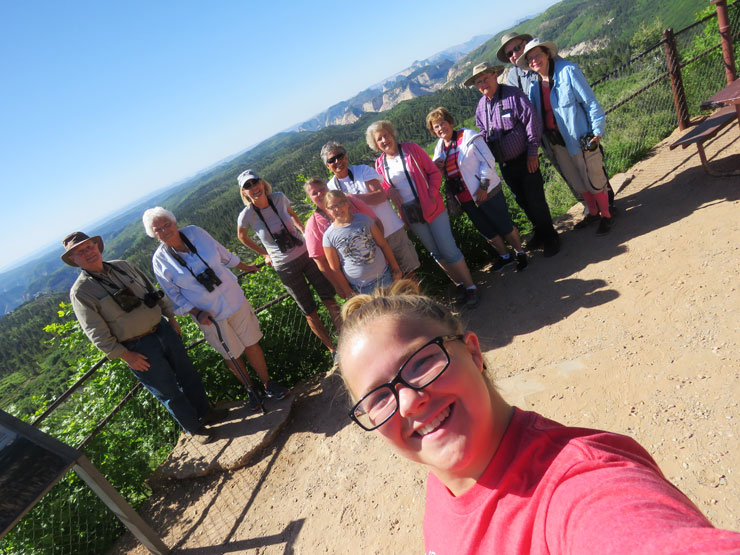 |
|
After a selfie and a couple
songs on the lookout over Zion we went for a hike on the C.G and Barney's
Trails. |
| We saw House Wren,
Dusky Flycatcher, Pine Siskin, Mountain Chickadee, a choir of Warbling
Vireos, Western Bluebirds, Red-Breasted Nuthatch, Yellow-rumped Warblers and
Chipping Sparrows. |
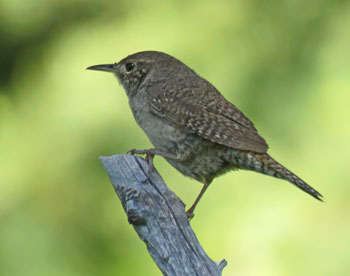 |
|
|
House Wren |
| We also got great
looks at a Green-tailed Towhee and a Olive-sided Flycatcher. At Blue Springs
we saw a Hammond's Flycatcher, MacGillviary's Warbler, Snowy Egrets,
Red-tailed Hawk, Western Kingbird, Pied-billed Grebe, a Canada Goose family,
a Ruddy Duck and Bald Eagle. We searched for the Acorn and Lewis's
Woodpeckers with no luck, but we did see a White-breasted Nuthatch, Cassin's
Finch and Mountain Bluebirds. We then drove around Kolob Reservoir and saw
Eared Grebe, Brewer's Blackbirds. Brown-headed Cowbirds, Yellow Warbler,
another Bald Eagle and Spotted Sandpipers. On the way down we saw a Northern
Flicker. |
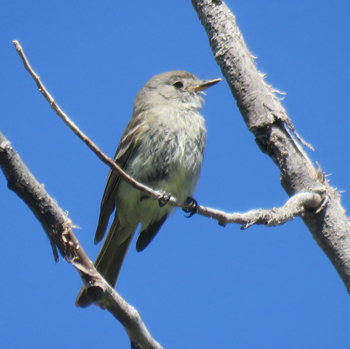 |
|
|
Dusky Flycatcher |
|
We found 95
Species!!!! I ended the night with a Great Horned Owl, a White-crowned
Sparrow and #98 LESSER NIGHTHAWK! Thanks to all who came. Amanda, Izzy and
Sammy for their extra eyes, Peter and Sharon for spending their 53rd
Anniversary with us, Natalie and the Botanists( Janet and Renee) they helped
us learn many different trees and plants my favorite being the Snowberry,
Yvonne and Lynn for being great passengers and thankful that we only lost
Jim and Vee once! What a great trip!! |
|
|






























